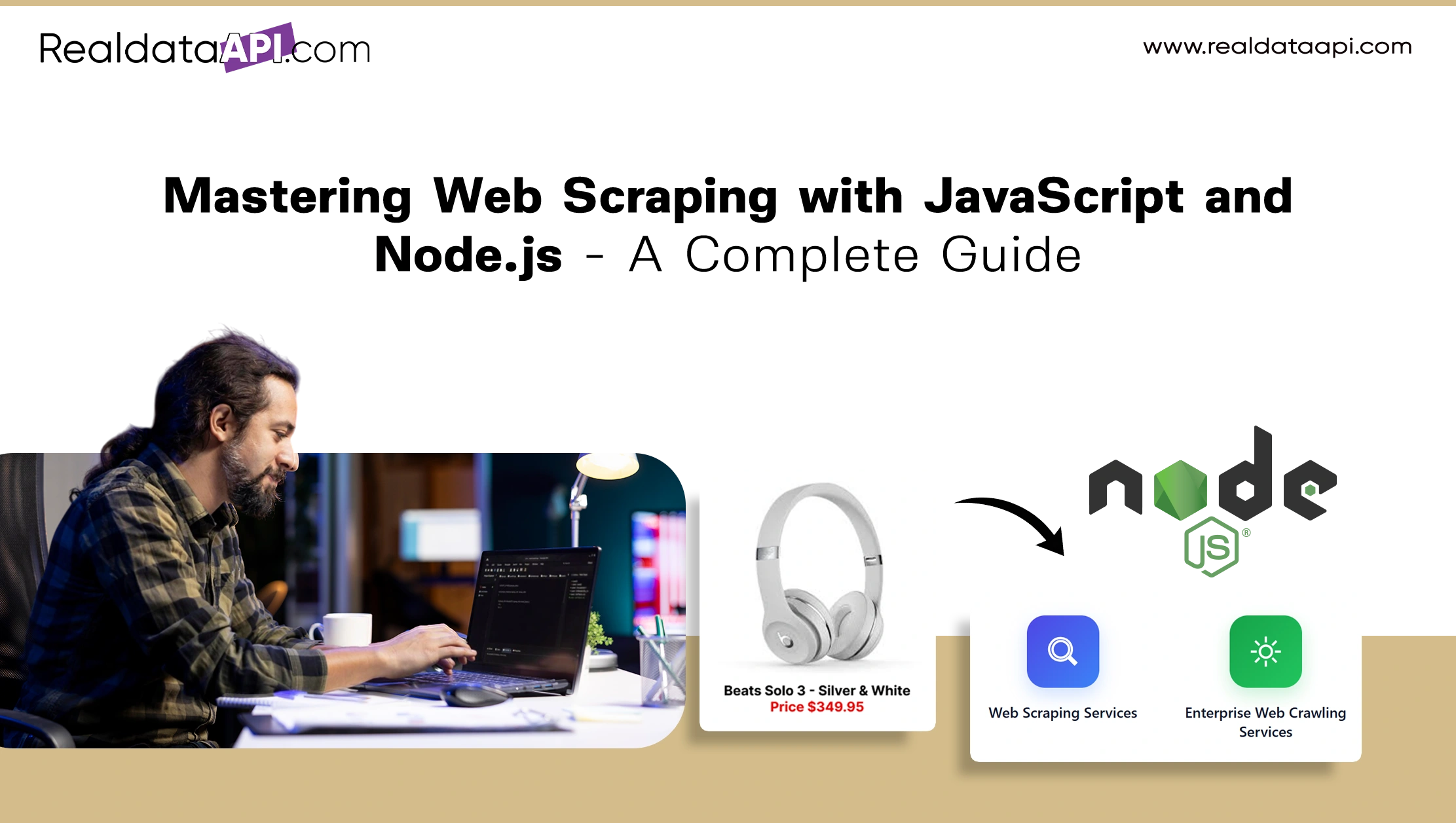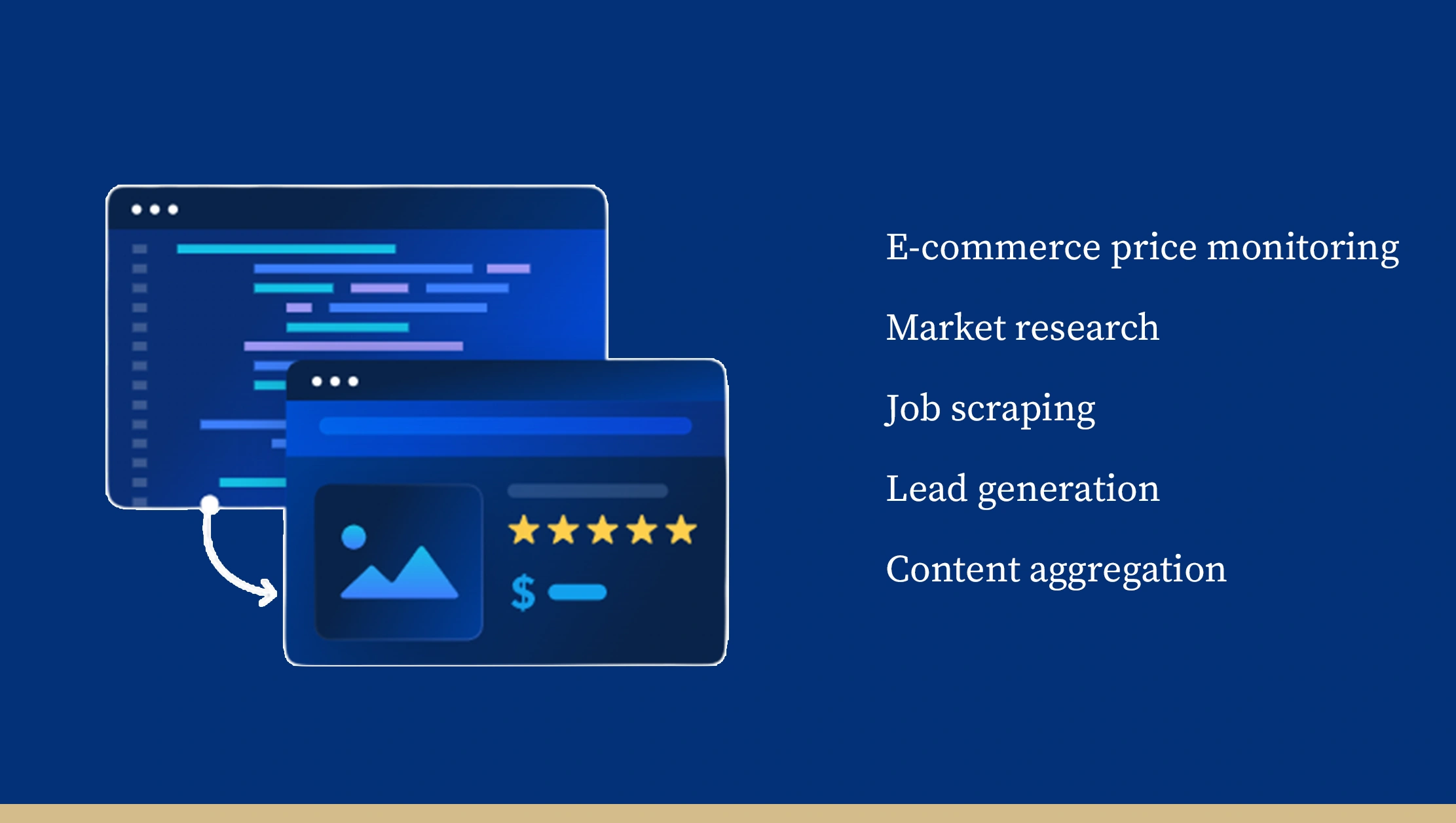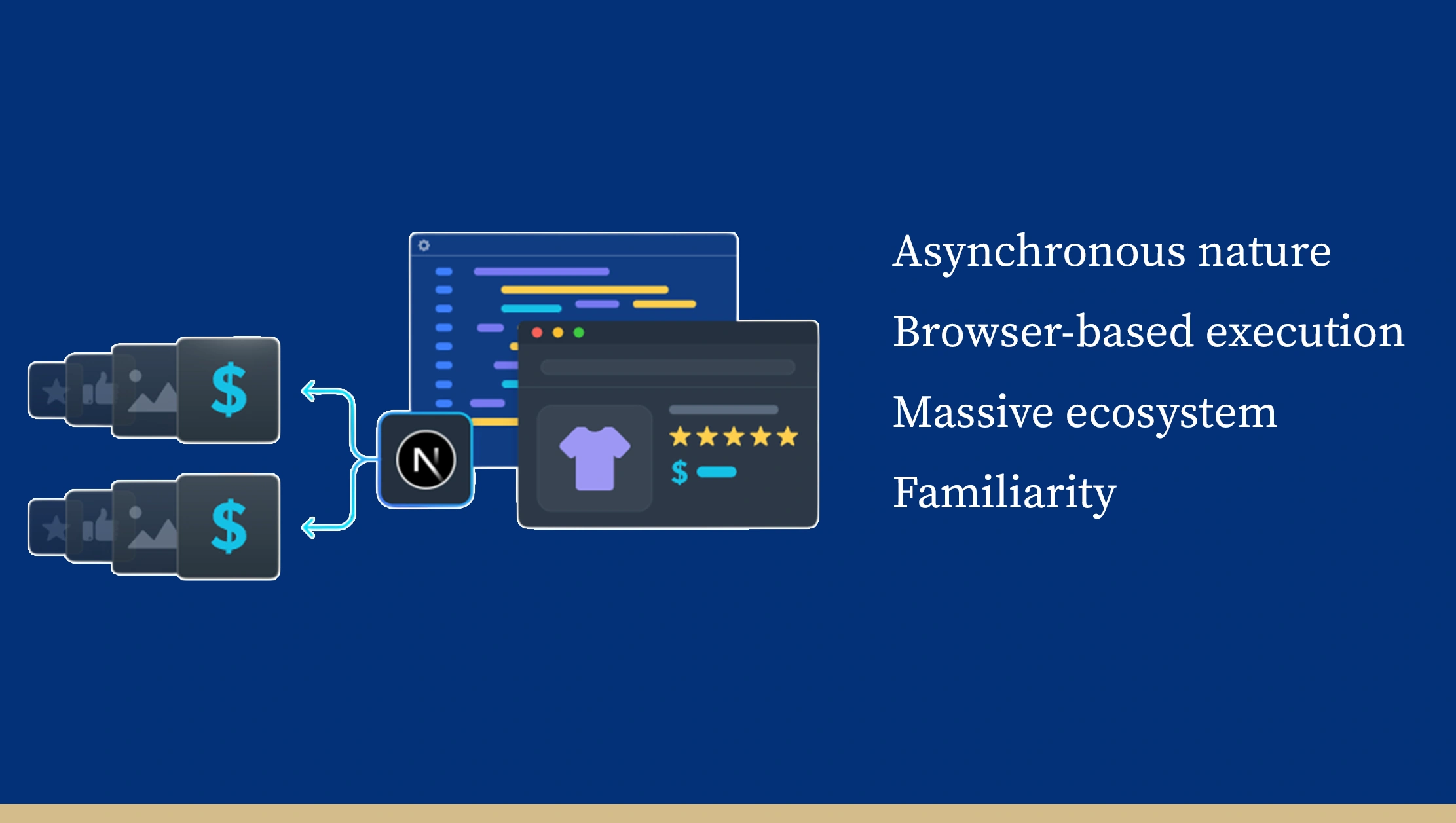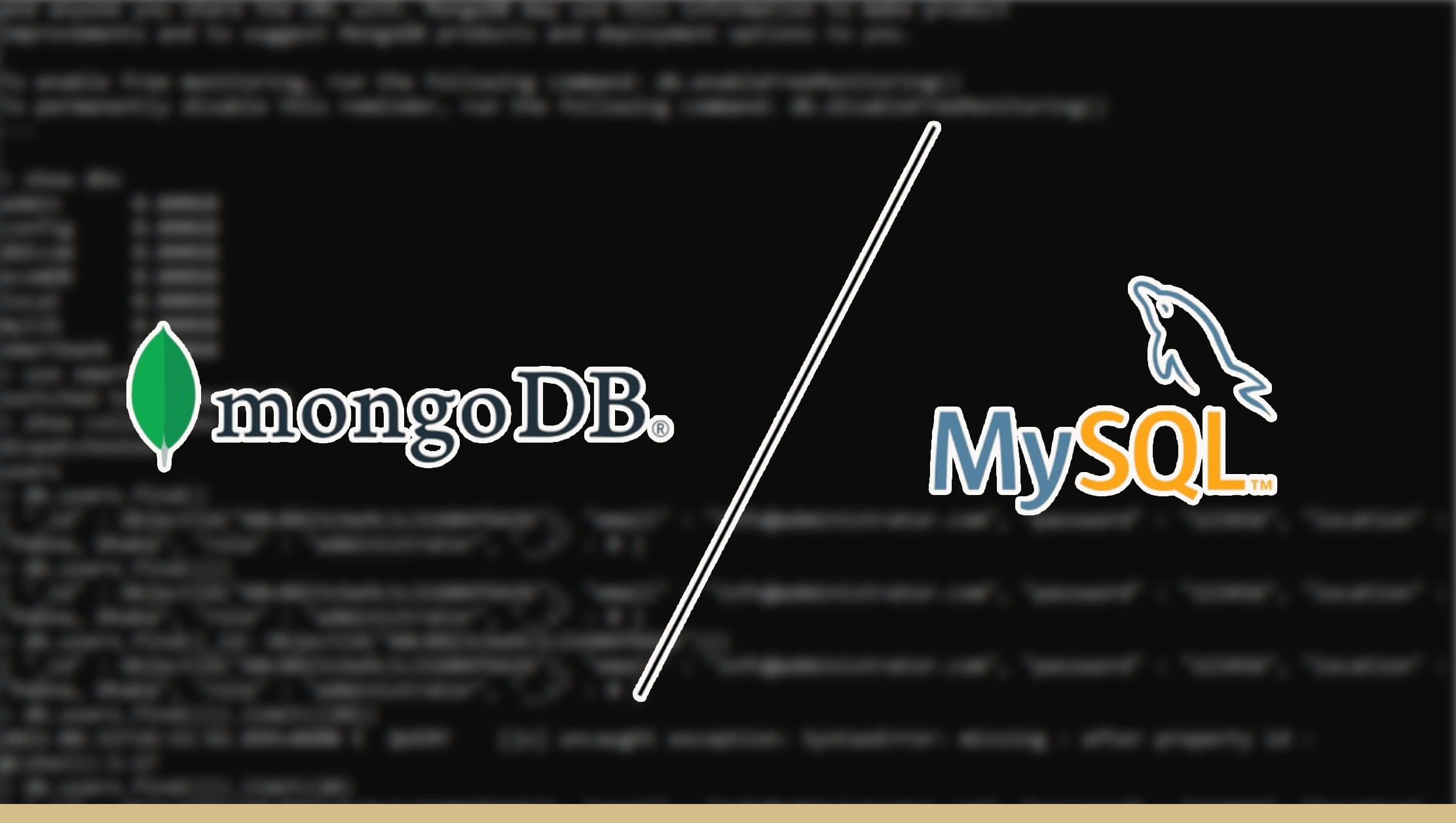

Introduction
Web scraping has become an essential technique for businesses, developers, and data enthusiasts who want to extract meaningful information from websites. Whether you want to gather product pricing for competitive intelligence, monitor job postings, collect reviews, or power your AI models with fresh data, web scraping makes it possible.
While several programming languages like Python, PHP, and Java are used in scraping, JavaScript with Node.js has emerged as a powerful combination due to its non-blocking I/O, speed, and massive ecosystem of libraries.
In this ultimate guide, we’ll dive deep into web scraping with JavaScript and Node.js. We’ll cover everything from the basics to advanced techniques, tools, and best practices, ensuring you’re well-equipped to build reliable scrapers.
We’ll also highlight how professional Web Scraping Services , Enterprise Web Crawling Services , and APIs like RealDataAPI can accelerate your projects and save significant time.
What is Web Scraping?

At its core, web scraping is the process of automatically extracting data from websites. Instead of manually copying and pasting content, scraping programs (called scrapers) send HTTP requests, parse HTML, and return structured data like JSON or CSV.
Common use cases of web scraping include:
- E-commerce price monitoring – Extract competitor product data and prices.
- Market research – Gather insights from forums, blogs, and news portals.
- Job scraping – Monitor career sites and job boards for trends.
- Lead generation – Collect business contact details from directories.
- Content aggregation – Compile news, articles, or reviews in one place.
Why Use JavaScript and Node.js for Web Scraping?

While languages like Python dominate the scraping ecosystem, JavaScript with Node.js has unique advantages:
- Asynchronous nature – Node.js handles multiple requests concurrently without blocking. Perfect for large-scale scraping.
- Browser-based execution – With tools like Puppeteer, you can simulate a browser, load dynamic content, and extract data from JavaScript-heavy websites.
- Massive ecosystem – NPM (Node Package Manager) offers thousands of libraries for HTTP requests, parsing, scheduling, and more.
- Familiarity – For developers already working with JavaScript in front-end or full-stack, Node.js provides a seamless experience.
Setting Up Your Node.js Scraping Environment
Before building a scraper, ensure you have Node.js installed. You can check by running:
node -v
npm -vIf not installed, download it from Node.js official website. Next, create a new project:
mkdir web-scraper
cd web-scraper
npm init -yInstall common libraries:
npm install axios cheerio puppeteer- Axios: For sending HTTP requests.
- Cheerio: For parsing HTML and extracting data.
- Puppeteer: For scraping JavaScript-heavy, dynamic websites.
Building Your First Web Scraper with Axios and Cheerio
Let’s scrape a simple static website to extract product names and prices.
const axios = require("axios");
const cheerio = require("cheerio");
const url = "https://example.com/products";
axios.get(url)
.then((response) => {
const $ = cheerio.load(response.data);
const products = [];
$(".product-item").each((index, element) => {
const name = $(element).find(".product-name").text().trim();
const price = $(element).find(".product-price").text().trim();
products.push({ name, price });
});
console.log(products);
})
.catch((error) => {
console.error("Error fetching data:", error);
});This script fetches the HTML, loads it into Cheerio, and extracts structured data.
Handling Dynamic Websites with Puppeteer
Many modern websites rely heavily on JavaScript frameworks like React, Angular, or Vue, meaning content is rendered dynamically. In such cases, Axios and Cheerio alone won’t suffice.
Here’s where Puppeteer, a headless browser automation tool, shines.
const puppeteer = require("puppeteer");
(async () => {
const browser = await puppeteer.launch();
const page = await browser.newPage();
await page.goto("https://example.com/dynamic-products", { waitUntil: "networkidle2" });
const products = await page.evaluate(() => {
return Array.from(document.querySelectorAll(".product-item")).map(item => ({
name: item.querySelector(".product-name").innerText,
price: item.querySelector(".product-price").innerText
}));
});
console.log(products);
await browser.close();
})();This script launches a headless browser, waits for dynamic content to load, and then extracts it.
Advanced Web Scraping Techniques with Node.js
1. Handling Pagination
Many websites split content across multiple pages. You can loop through pages and extract data sequentially.
for (let page = 1; page <= 5; page++) {
const url = `https://example.com/products?page=${page}`;
// Scrape each page
}2. Dealing with CAPTCHAs and Bot Protection
Websites often use anti-bot measures like CAPTCHAs, IP blocking, and request throttling. To handle this:
- Use rotating proxies.
- Employ user-agent rotation.
- Use headless browsers like Puppeteer for stealth scraping.
- Rely on Web Scraping API solutions like RealDataAPI that handle these complexities for you.
3. Scheduling and Automation
For continuous scraping (like price monitoring), use job schedulers like node-cron or integrate with cloud platforms like AWS Lambda.
npm install node-cronconst cron = require("node-cron");
cron.schedule("0 * * * *", () => {
console.log("Running scraper every hour...");
// Call your scraper function
});Best Practices for Web Scraping with Node.js

- Respect robots.txt – Always check a site’s robots.txt to understand what’s allowed.
- Throttle requests – Avoid overwhelming servers with too many requests at once.
- Handle errors gracefully – Add retries and error handling.
- Store data efficiently – Save results into databases like MongoDB, PostgreSQL, or export to CSV/JSON.
- Leverage APIs where possible – Instead of scraping HTML, always check if the site provides a public API.
When to Use Web Scraping Services and APIs?

While Node.js is great for DIY scrapers, scaling projects for thousands of pages daily comes with challenges: IP bans, infrastructure costs, and maintenance.
This is where Web Scraping Services and Enterprise Web Crawling Services come in. These solutions handle:
- Data at scale (millions of pages).
- Proxy rotation & CAPTCHA solving.
- Data delivery in structured formats (JSON, CSV, Excel, APIs).
Platforms like RealDataAPI provide a Web Scraping API that simplifies scraping. Instead of coding, you send a request to the API, and it returns clean, structured data—ready to use.
For businesses, this means:
- Faster data access.
- Lower development cost.
- Scalability with enterprise-grade infrastructure.
Comparing DIY Node.js Scraping vs. RealDataAPI
| Feature | DIY Node.js Scraper | RealDataAPI |
|---|---|---|
| Setup Time | High (requires coding) | Low (ready-to-use API) |
| Scalability | Limited | Enterprise-grade |
| Anti-Bot Handling | Manual | Built-in |
| Maintenance | Continuous | None required |
| Cost | Developer time + servers | Pay-as-you-go model |
| Best For | Developers & experiments | Businesses & enterprises |
Example: Using RealDataAPI for Web Scraping
Instead of writing and maintaining scrapers, you could use RealDataAPI like this:
curl "https://api.realdataapi.com/scrape?url...I_KEY"The API would return structured JSON with product data, eliminating the need for coding complex scrapers.
The Future of Web Scraping with Node.js

With advancements in AI, machine learning, and NLP, web scraping is evolving. Future scrapers won’t just collect data but also understand context, sentiment, and patterns. JavaScript and Node.js will continue to play a major role due to:
- Growing adoption of serverless scraping functions.
- Increased integration with headless browser automation.
- Powerful APIs like RealDataAPI that combine raw scraping with intelligence.
Conclusion
Web scraping with JavaScript and Node.js is a powerful approach for extracting data from the web. With libraries like Axios, Cheerio, and Puppeteer, you can build scrapers ranging from simple static extractors to advanced crawlers for dynamic websites.
However, scaling scraping efforts requires handling complex challenges—CAPTCHAs, proxies, dynamic rendering, and legal considerations. For this reason, businesses often turn to Web Scraping Services, Enterprise Web Crawling Services, or Web Scraping API solutions like RealDataAPI to streamline the process.
Whether you’re a developer experimenting with scrapers or an enterprise looking to automate large-scale data collection, JavaScript and Node.js, paired with professional scraping APIs, provide the ultimate toolkit.













